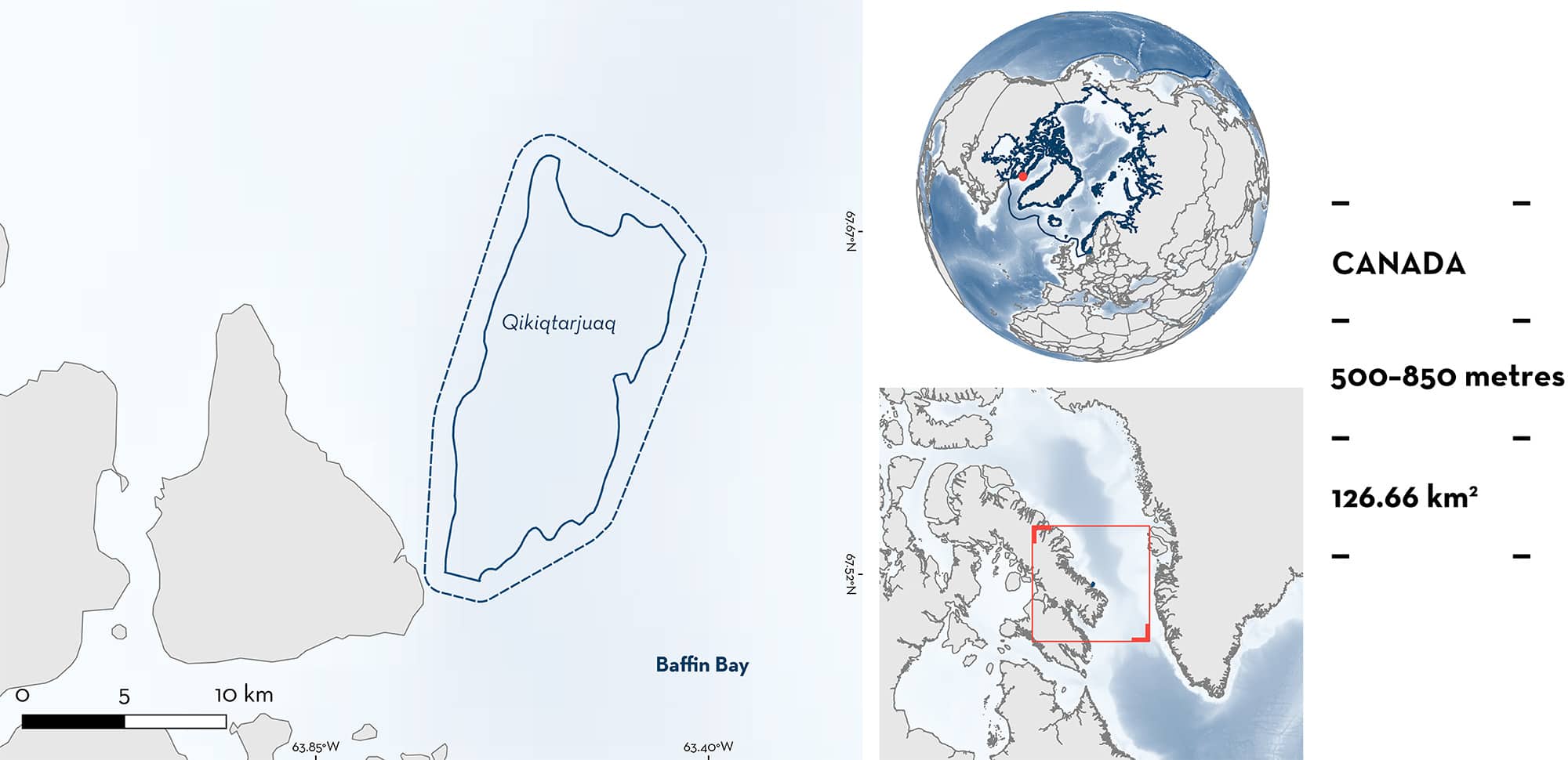ISRA FACTSHEETS
ISRA FACTSHEETS
POLAR WATERS REGION
Qikiqtarjuaq
Summary
Qikiqtarjuaq is located on the eastern side of Baffin Island, Nunavut, Canada. This area is situated on the relatively shallow (~600 m) Broughton Trough. Benthic habitats consist primarily of fine substrates. The area is characterised by a high productivity associated with the seasonal sea ice melts from the fjords. Within this area there is: reproductive area (Arctic Skate Amblyraja hyperborea).
Download factsheet
Qikiqtarjuaq
DESCRIPTION OF HABITAT
Qikiqtarjuaq is located on the eastern side of Baffin Island, Nunavut, Canada. This area is situated on the relatively shallow (~600 m) Broughton Trough. Benthic habitats consist primarily of fine substrates. This area receives significant amounts of sediment originating from the fjords associated with the Penny Ice Cap (Syvitski et al. 2022). The breakup of sea ice in Broughton Channel typically occurs by the boreal summer from mid-July to early August. The channel is usually free of ice from July to September and starts to freeze again in early October (ECCC 2017).
High productivity is associated with the sea ice melts from the fjords as organic carbon content increases in the water column (Pedro et al. 2023). The Baffin Island coast experiences colder, fresher water masses from the Arctic, with the Baffin Island Current ranging from 0 to 5°C at the surface and salinities of 30 to 32. Bottom temperature is mainly between 0 to 1.5°C (Zweng & Münchow 2006).
This Important Shark and Ray Area is benthic and subsurface and is delineated from 500 m to 850 m based on the depth range of Qualifying Species in the area (D Kulka unpubl. data 2024).
CRITERION C
SUB-CRITERION C1 – REPRODUCTIVE AREAS
Qikiqtarjuaq is an important reproductive area for one ray species.
Between 1999 and 2023, 8,325 trawl set surveys were conducted by Fisheries and Oceans Canada (DFO) in Northwest Atlantic Fisheries Organization (NAFO) Subarea 0 (Baffin Bay, Davis Strait, and Eastern Hudson Strait) at depths between 102 and 1,502 m. Surveys were conducted during the ice-free months, between August–November (K Hedges unpubl. data 2024). Within these surveys in the broader NAFO Subarea 0, a total of 3,311 Arctic Skates were caught, of which 233 were neonates or young-of-the-year (YOY). All animals measuring20 cm total length (TL) or less were classed as neonates and YOY (D Kulka unpubl. data 2024). The hatching size for this species is 10–14 cm TL (D Kulka unpubl. data 2024). Neonates and YOY were captured at depths from 254 to 1,462 m and only by three of the gear types used by 2,554 trawls from the 8,325 total (‘Bacalao 6’, n = 6; ‘Alfredo-03’, n = 144; ‘Cosmos-2000’, n = 84). Since 2008, within NAFO Subarea 0, 1,967 trawl surveys using these gear types were conducted and captured 214 neonates or YOY.
Within Qikiqtarjuaq, ten trawl sets were conducted from 2006–2017 and 44 Arctic Skates were captured at depths from 271 to 1,483 m from 2008–2017. Of these, 30 were classed as neonates or YOY and were primarily captured from 500 to 850 m depth. Neonates and YOY at Qikiqtarjuaq therefore represent 68.2% of Arctic Skate catches within this area and 14.1% of all contemporary records across NAFO Subarea 0, whereas only 0.5% contemporary trawls with the specific gear types were conducted in this area. The Arctic Skate is the dominant skate species in Davis Strait and southern Baffin Bay (Kulka et al. 2016). Although the species likely reproduces in other areas, the large sampling effort in the Canadian side of Baffin Bay highlights the importance of this area for reproduction.
Download factsheet
SUBMIT A REQUEST
ISRA SPATIAL LAYER REQUEST
To make a request to download the ISRA Layer in either a GIS compatible Shapefile (.shp) or Google Earth compatible Keyhole Markup Language Zipped file (.kmz) please complete the following form. We will review your request and send the download details to you. We will endeavor to send you the requested files as soon as we can. However, please note that this is not an automated process, and before requests are responded to, they undergo internal review and authorization. As such, requests normally take 5–10 working days to process.
Should you have questions about the data or process, please do not hesitate to contact us.


